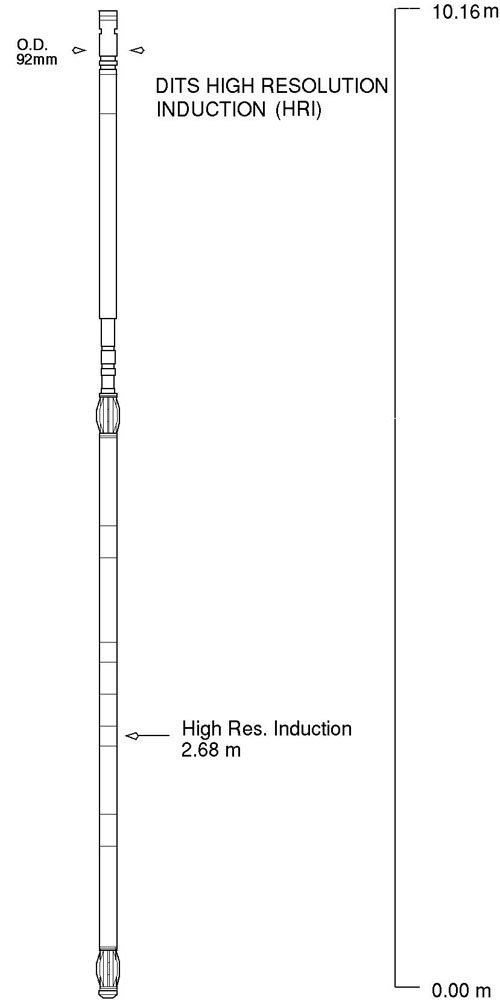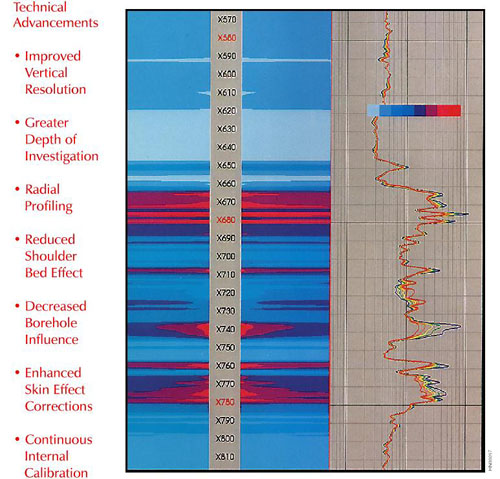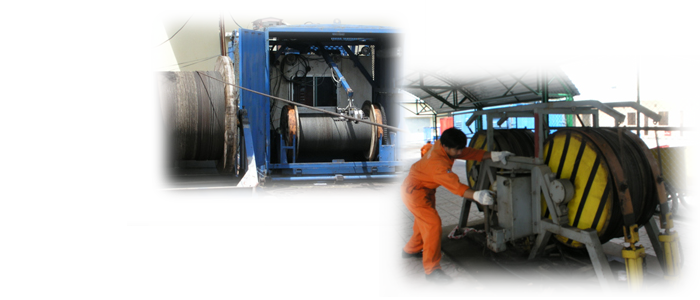L&TD
LOGGING & TESTING DIVISION

High Resolution Induction
 |
HRI Tool specification
|
| As the search for new oil and gas resources continues, more and more exploration and development is targeted toward so-called unconventional reservoirs. Drilling objectives include interceded sand-shale sequences, thin beds, low-resistivity pay sands, and beds with little resistivity contrast from their surroundings. While the detection and evaluation of many of these reservoirs often exceed the capabilities of conventional resistivity devices, significant technical advancements allow HRI tools to locate and provide accurate information about such zones, which may otherwise be bypassed
Thin beds Reservoir intervals less than 10 feet thick comprise numerous primary and secondary exploration and development objectives. Utilizing reduced shoulder bed effects and improvements in vertical response, HRI logs resolve beds as thin as 2 feet. Laminated Sand-Shale Sequences Marine depositional environments and fluvial flood plains commonly contain laminated sand-shale sequences. Decreased shoulder response and improved vertical resolution again enhance interpretation in these situatio |
| Additional Secondary Objectives
By detecting thin beds and using quadrature processing to improve tool response, HRI logs can locate additional, potentially productive zones not indicated by other logging devices. While some primary objectives may not require HRI advantages for evaluation, HRI logs can illuminate secondary production possibilities for completion attempts. Without HRI information, numerous profitable secondary objectives could be permanently overlooked. Groningen-Effect Environments Below massive, highly resistive formations, deep laterolog devices read abnormally high resistivities. This phenomenon is known as the Groningen-effect and normally masks any productive zone below the massive resistive bed. HRI logs display no Groningen-effects. Oil-Base Muds Focused resistivity devices such as laterolog, spherically focused, and microspherically focused tools are designed to operate in an electrically conductive borehole medium and thus do not function effectively in oil-base muds. This requirement is not applicable to HRI tools; consequently, they are able to operate in oil-base muds and air-filled boreholes. Turbidites Deeper water exploration targets and many land prospects commonly include turbidites, which are high-energy submarine depositional environments encountered near continental shelf margins. The superior vertical resolution offered by HRI measurements can improve the evaluation of thin beds contained in turbidite sequences. Deep Invasion Typically, deeply invaded formations are associated with moderate permeability, medium to low porosity, high-water-loss muds, overbalanced mud systems, and drilling operations in pressure-depleted reservoirs. By investigating 1.4 times deeper than conventional induction devices, the HRI tool explores past the invaded zone to improve true resistivity measurement accuracy. |
 |













